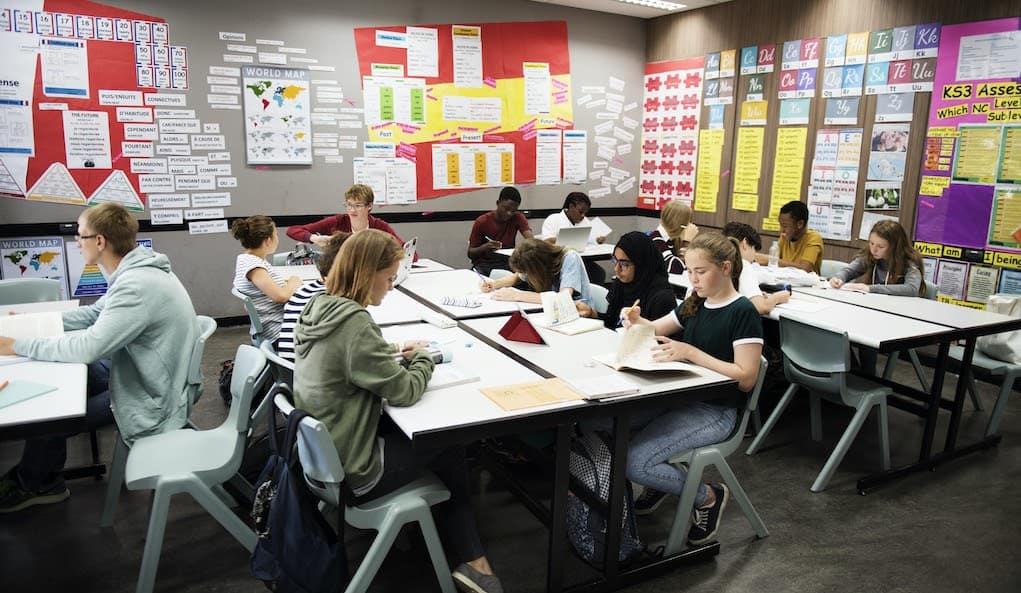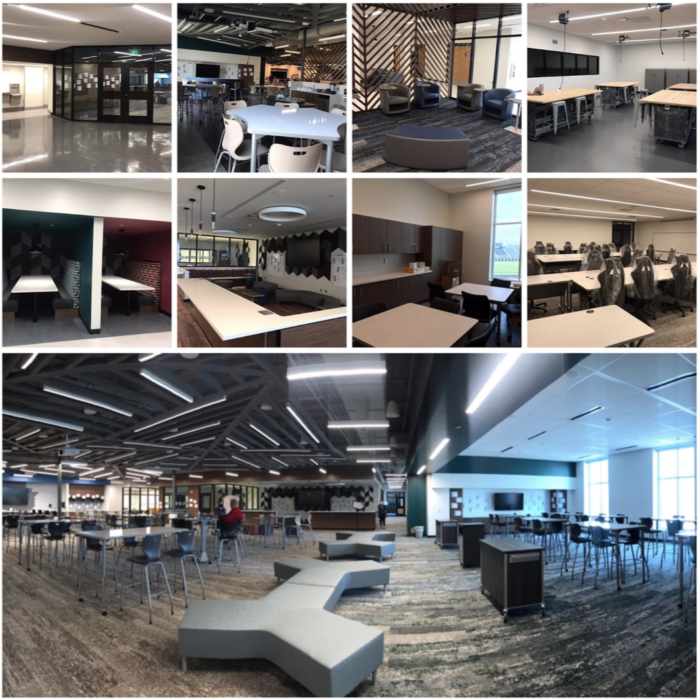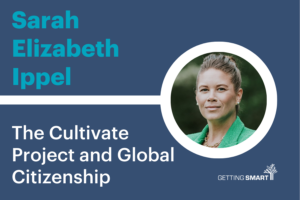A Microschool on the Cutting EDGE of Learning

By: Dr. April Adams & Sara Wickham
We know many working adults who solve problems for a living. They are engineers, landscapers, journalists, army generals, entrepreneurs, nurses; the list could go on. We’ve never met a working adult, who isn’t a teacher, who organizes every day in 45 – 50 minute segments or separates the day into isolated subject areas. Every problem in their field requires that they draw upon multiple disciplines, work both collaboratively and independently, and organize time in a way that yields productivity. The traditional systems within schools make it challenging to emulate this type of workflow.
Our quest to create an opportunity for learners to engage in authentic problem solving and deep learning that integrates multiple disciplines, and develop the agency to organize time in a way that makes sense in the learning process led us on a journey of considering how high school could mirror real-world learning and ultimately how a microschool might be a way to empower our learners.
Liberty High School is a suburban public, comprehensive high school serving over 1,900 students in a district of 11,000+ students. Within Liberty High School lives EDGE, a globally focused microschool, which will open in the Fall of 2021 to its first class of students. In the first year, EDGE will serve approximately 115 students.

It’s hard to say exactly when or where EDGE began. As school leaders, we’ve been fortunate to visit many schools throughout the country to explore, collaborate, and dream about what more school could be for our students. We’ve had experts like Tom VanderArk and Rebecca Midles say, “Have you thought about…” We’ve engaged in brainstorming sessions on planes, in conference rooms, and in the halls during passing periods. Ultimately, this research and collaboration led to the articulation of EDGE.
EDGE, which stands for Empowering Discovery of the Global Experience, started on a google doc with a mission, vision, core values, and nine signature features. It felt insanely dreamy and a bit crazy, but we felt it was a compelling enough idea to share with our district leadership. They didn’t say no. In fact, they said yes! Drawing upon global dispositions, we could all imagine an opportunity for students to explore global issues and learn in ways that also allows for authentic problem solving.
Pan’gano Pan’gano (little by little), we continued to flesh out ideas that started to include examples of what teaching and learning could look like within EDGE and began sharing the idea with our teaching staff. We identified a team of teachers that were passionate about the concepts within EDGE and desired to innovate teaching and learning to fulfill the mission and vision. Continued collaboration with experts inside and outside our school fueled the development of EDGE. These cycles of feedback and iteration strengthened our collective understanding and helped us to articulate the vision into practical terms. The exercise of writing A Day at EDGE helped us all see what could be.
A true test occurred when we hosted focus groups with students to share the concept of EDGE and solicit feedback from our learners. This process not only tested our ability to articulate the idea of EDGE but allowed us to see what excited students, as well as their questions and concerns. It helped us anticipate the components of the traditional system that students and parents would be open to changing (e.g. the daily bell schedule) and which components would be better left unchanged for now (e.g. transcripts). Our students provided valuable feedback about what could be improved and clarified but also encouragement that this was a concept many would want for their own education.
As EDGE continues to develop and expand, the ideas and expertise of many are making it a reality. As ideas are added to the table, the mission, vision, and signature features always bring us back to our purpose and our promise. The decisions we make about logistics, resources, course offerings, and other components of school are filtered through the mission, vision, and signature features. Articulating these foundational components in an authentic and deliverable way serves as a guidepost throughout the development process.
These guideposts also inspire us to overcome our fears and dream beyond our current reality. Our team of teachers is a brilliant group of thinkers who are unpacking how learning can be framed around global issues. At times, we face uncertainty and desire permission to frame learning in a new way. At a recent collaboration, we reminded them of the scene from the movie The Sandlot where Smalls is told by his mom to “Climb trees, hop fences. Get into trouble, for crying out loud.” Creating real-world learning experiences can sometimes feel like we are out getting into trouble in our traditional systems of school. If that’s what it takes, we may need to get into some trouble!
The development of a microschool has certainly come with challenges, and we continue to embrace the mindset of nanakorobi yaoki (stumbling seven times but recovering eight). Amidst a pandemic, it is easy to believe that perhaps the opening of a microschool should be delayed. Amidst skepticism from colleagues, it is easy to question if it can really work. When interested students and parents repeatedly share that this is the type of education they need and want, and that they’ve never been more excited about school, we know it is worth persisting.
For more, see:
- Why and How to Open a Microschool
- How School Districts, Cities, and CBOs Use Microschools to Innovate
- #IRL: 20 Tips for Real Life Learning
Dr. April Adams is the Principal at Liberty High School. Follow her on Twitter at @AAdamsEML.
Sara Wickham is the Assistant Principal at Liberty High School. Follow her on Twitter at @sara_wickham.
Stay in-the-know with innovations in learning by signing up for the weekly Smart Update. This post includes mentions of a Getting Smart partner. For a full list of partners, affiliate organizations and all other disclosures, please see our Partner page.







0 Comments
Leave a Comment
Your email address will not be published. All fields are required.